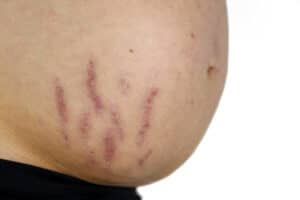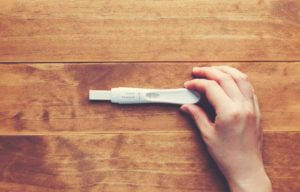This Is What You Should Know About Lochia
Every mother has postpartum flow after giving birth. Despite this, the topic is very rarely talked about. As a result, many new mothers who have become mothers for the first time do not know anything about it and are surprised by the flow.
If you were surprised by the postpartum flow and you are a bit worried, I can reassure you, because the postpartum flow is quite normal after pregnancy. Postpartum flow is a very normal part of the postnatal healing process. I know the topic can be uncomfortable and you may even feel a bit uncomfortable but every mom goes through this phase once.
Table of contents
What Is Happening Inside Me And What Does Postpartum Flow Look Like?
The flow is still quite bloody in the first few weeks but there is no need to worry because it simply means that your uterus is contracting again, so it is just returning to its previous size. At the point where the placenta has detached in the uterus, the tissue starts to heal and excrete blood, secretions and dead pieces of tissue. The discharge is quite heavy in the beginning but decreases in the following days. In the beginning, the discharge tends to be light red, but if you are breastfeeding, the discharge may become stronger and dark red. In the middle of the period the color becomes more pink or brown and at the end it becomes more yellowish or colorless.
How Long Does Postpartum Flow Last?
As a rule, lochia does not last very long. For most people it lasts about 4 weeks. In a breastfeeding mother, lochia goes away more quickly.
Lactation during breastfeeding
When breastfeeding, lochia increases because oxytocin is released. When the baby is laid, contractions are triggered, which is good because it promotes involution and the donor’s mucous membrane is pressed out in the process. The second advantage is that by squeezing out the mucous membrane of the donor, no secretions can accumulate and no infection can be triggered.
Do I Also Have Postpartum Flow After A Cesarean Section?
After a cesarean section, you also get lochia, because the placenta also detaches in the uterus and this must be excreted.
Watch out!!!
If you have so much discharge not only during breastfeeding and it contains many blood clots, as well as pieces of tissue, then you should get checked or contact your midwife. You should also be concerned if your postpartum discharge smells noticeable, as postpartum discharge actually smells inconspicuous. If you have signs such as a sore lower abdomen and fever, you may have inflammation of the uterus.
If You Have These Signs, You Must Go To The Doctor
1. If your bleeding is still bright red after one week.
2. If your bleeding does not decrease after one week.
3. If you get fever and lower abdominal pain.
4. If your pad fills up very quickly (60 minutes).
5. If your flow develops an unpleasant odor.
6. If there are large blood clots in your flow.
Postpartum Flow During Your Free Time
It is best to wear a sanitary napkin with the highest absorbency, as your flow will be quite heavy in the first few days. You should always have a few pads with you when you are out and about. You must not use tampons, as the risk of infection is very high.
This is the best way to wash your private parts
It is best to wash downstairs with a light shower spray and please do not use perfumed bath additives, bubble baths and shower gels until the flow is gone, as these will only irritate your mucous membranes. It is also better for the future if you do not use perfumed shower gel for intimate washing, as it generally irritates the mucous membranes.
Is sex allowed?
Sexual intercourse is not really forbidden but doctors advise against it because it could also cause infections. Therefore, you should wait at least 3 weeks.













1 thought on “Here’s What You Should Know About Lochia”